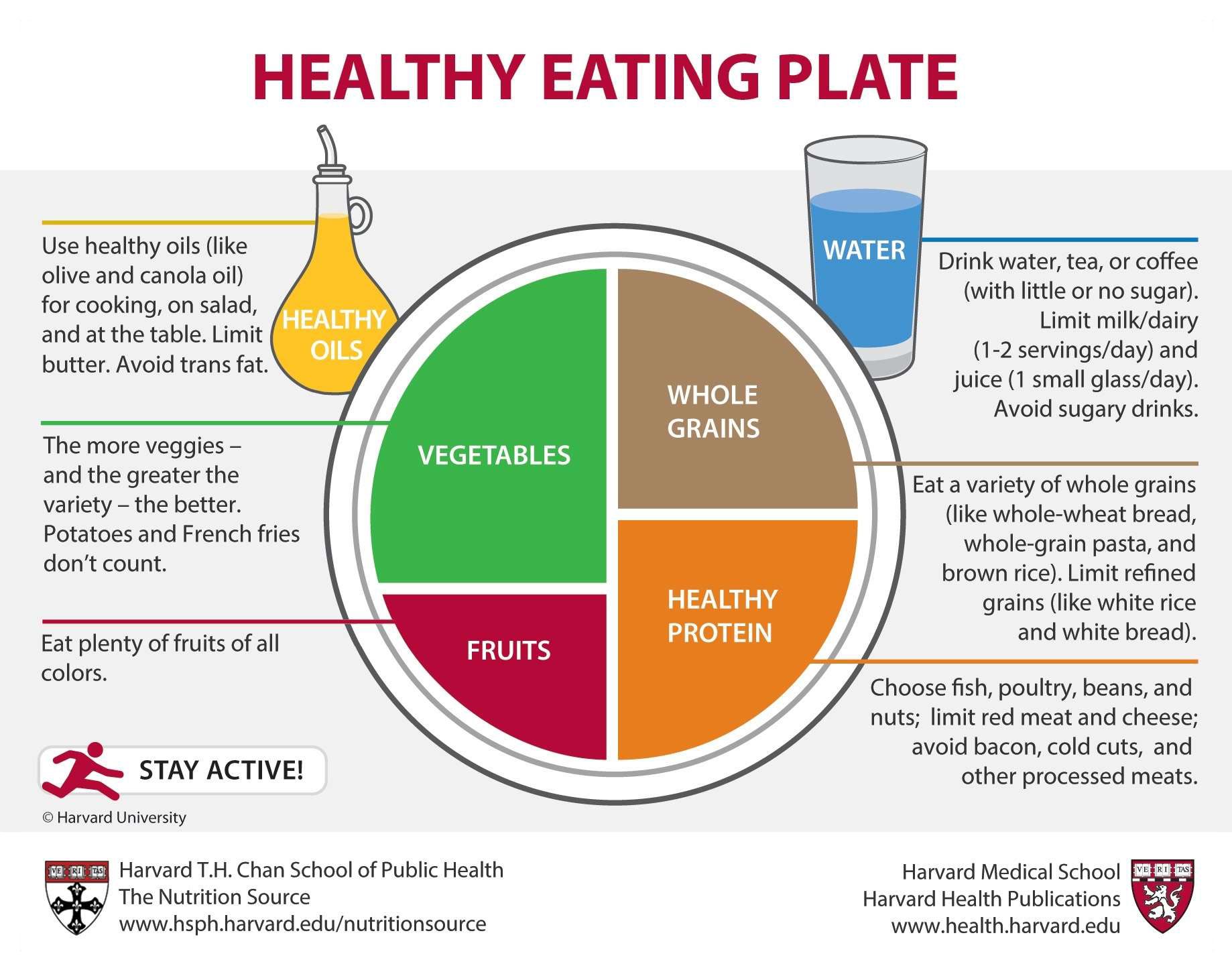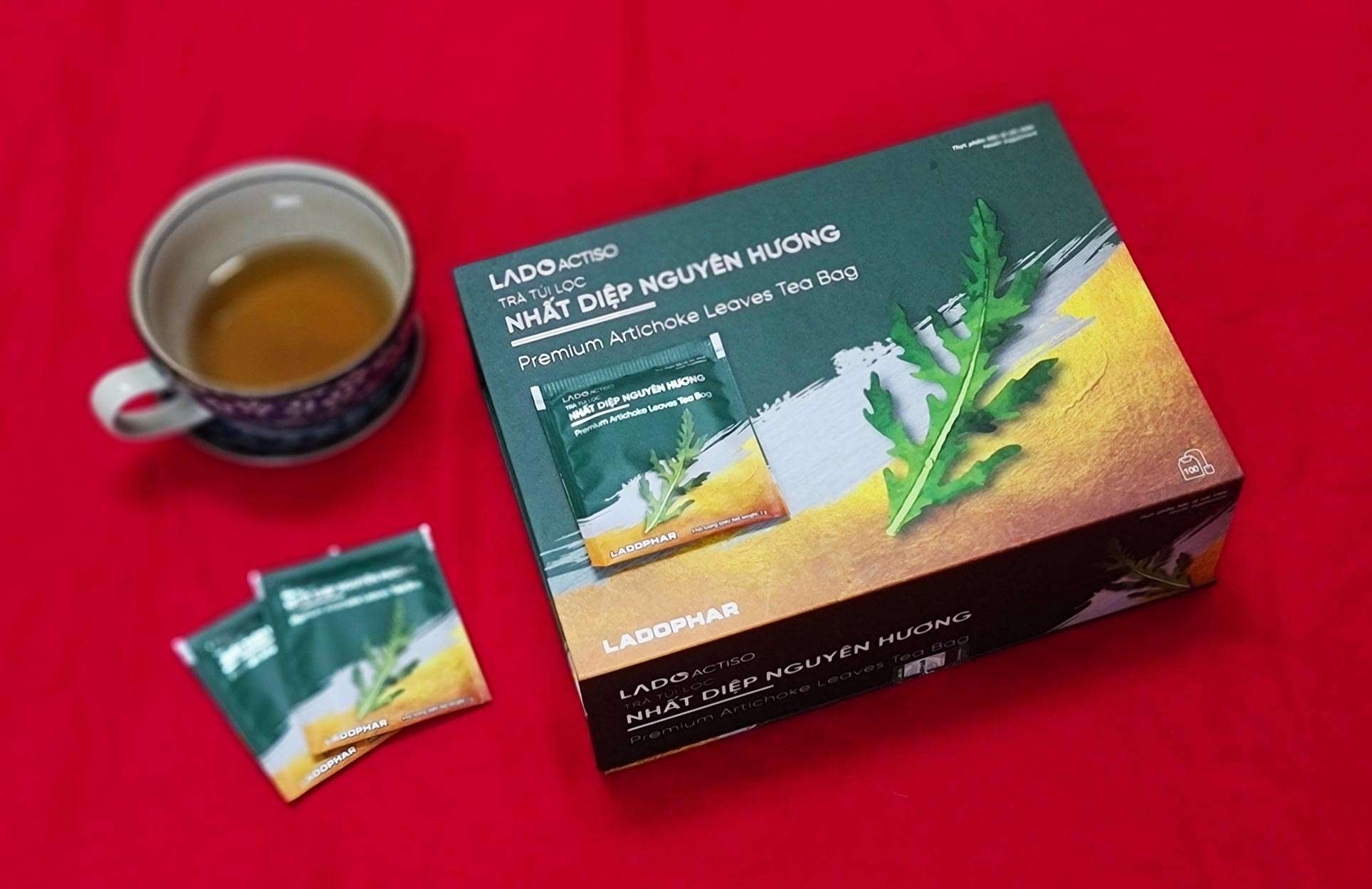Healthy Eating Plate
Healthy Eating Plate
Use the Healthy Eating Plate as a guide for creating healthy, balanced meals — whether served at the table or packed in a lunch box. Download the picture here, and hang it on your refrigerator to serve as a daily reminder when planning and preparing your meals!
Building a Healthy and Balanced Diet

Make most of your meal vegetables and fruits – ½ of your plate.Aim for color and variety, and remember that potatoes don’t count as vegetables on the Healthy Eating Plate because of their negative impact on blood sugar.
Go for whole grains – ¼ of your plate.Whole and intact grains—whole wheat, barley, wheat berries, quinoa, oats, brown rice, and foods made with them, such as whole wheat pasta—have a milder effect on blood sugar and insulin than white bread, white rice, and other refined grains.
Protein power – ¼ of your plate.Fish, poultry, beans, and nuts are all healthy, versatile protein sources—they can be mixed into salads, and pair well with vegetables on a plate. Limit red meat, and avoid processed meats such as bacon and sausage.
Healthy plant oils – in moderation.Choose healthy vegetable oils like olive, canola, soy, corn, sunflower, peanut, and others, and avoid partially hydrogenated oils, which contain unhealthy trans fats. Remember that low-fat does not mean “healthy.”
Drink water, coffee, or tea.Skip sugary drinks, limit milk and dairy products to one to two servings per day, and limit juice to a small glass per day.
Stay active.The red figure running across the Healthy Eating Plate’s placemat is a reminder that staying active is also important in weight control.
The main message of the Healthy Eating Plate is to focus on diet quality:
√ The type of carbohydrate in the diet is more important than the amount of carbohydrate in the diet, because some sources of carbohydrate—like vegetables (other than potatoes), fruits, whole grains, and beans—are healthier than others.
√ The Healthy Eating Plate also advises consumers to avoid sugary beverages, a major source of calories—usually with little nutritional value—in the American diet.
√ The Healthy Eating Plate encourages consumers to use healthy oils, and it does not set a maximum on the percentage of calories people should get each day from healthy sources of fat. In this way, the Healthy Eating Plate recommends the opposite of the low-fat message promoted for decades by the USDA.
Copyright © 2011, Harvard University. For more information about The Healthy Eating Plate, please see The Nutrition Source, Department of Nutrition, Harvard T.H. Chan School of Public Health, www.thenutritionsource.org, and Harvard Health Publications, www.health.harvard.edu.
Products

Premium Artichoke Leaves Tea
Artichoke leaves, also known as Cynara scolymus leaves, have been used to treat metabolic disorders. Artichoke leaf extract, has been studied to demonstrate hepatoprotective activity against obesity-induced obesity by a high-fat diet.

Coconut Butter
Coconut butter is high in lauric acid (about 50%), caprylic acid, capric acid and Medium-chain triglycerides which are considered valuable sources of energy that are quickly absorbed by the body. Fiber content reaches about 14% and completely does not contain harmful fats for the body.


.jpg)
